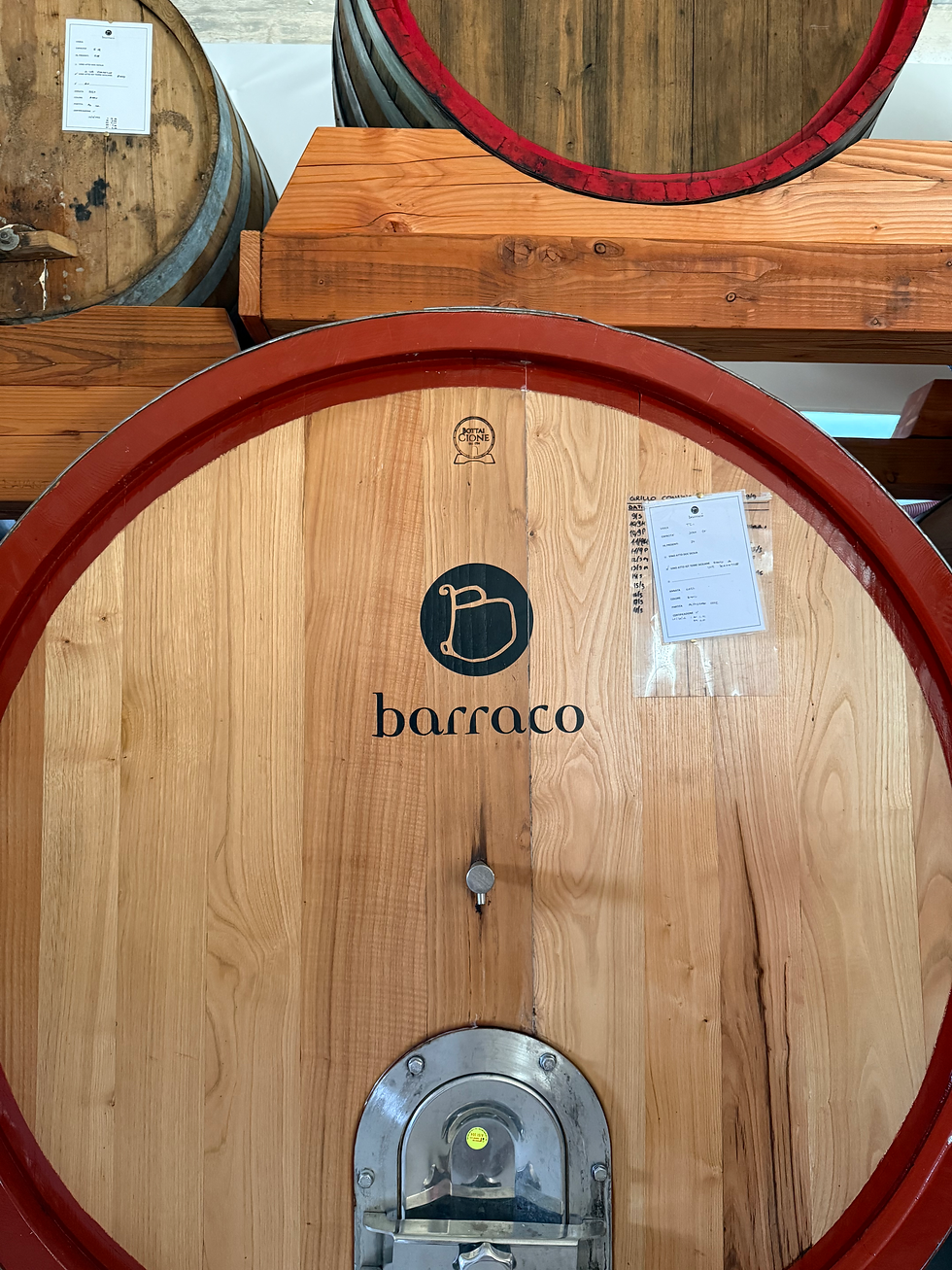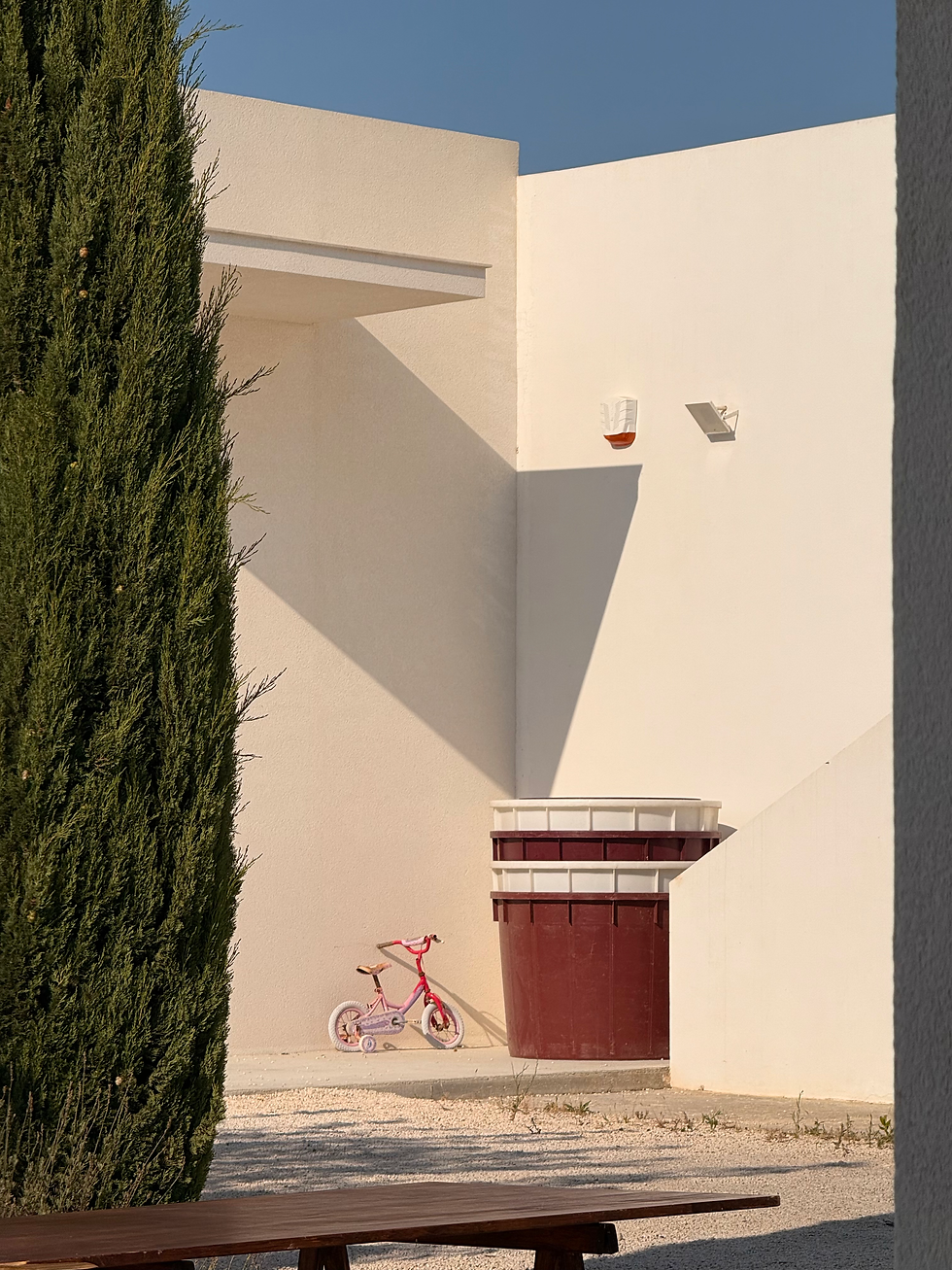Barraco: Marsala’s Sea-Salt Memory (and Why I Fell for It in August)
- Alice Vanni
- Oct 10
- 4 min read

There are wines that speak of a place, and there are wines that remember it. On Sicily’s western edge, Marsala faces the Stagnone lagoon and the Egadi Islands; wind and salt write their signatures on every vine. This is where Nino and Angela Barraco chose to root their life project: tiny, stubbornly place-true wines that taste like sea light and limestone.
The Oldest Thread: Phoenicians, Mozia, and the Salt Route
Long before the British fortified Marsala, Phoenician traders settled the lagoon—especially the island of Mozia (Motya)—in the 8th century BCE. Amphorae, harbor works, and a museum’s worth of finds tell the story of a maritime hub where wine moved with salt and ceramics across the Mediterranean. The lagoon’s barrier islands tempered the climate then as now, protecting vines and saltpans alike.
What did “Marsala wine” mean before fortification?
Sources point to an unfortified style aged by a perpetual transfer method—the “in perpetuum” system, an ancestor of solera—creating complexity without spirit. That’s the pre-British identity many of today’s iconoclasts have tried to revive. Marco De Bartoli is the iconic producer who revived pre-British winemaking traditions, and in 1980, he became the first to bottle an oxidative wine – that is, one aged in wooden barrels without topping up. Unfortunately I hadn't the chance to visit it this time, but it will be a great excuse to be back.
Instead, what Barraco have created stands out from this history, and I will explore it here.
From Pre-British to Post-Modern: The Barraco Philosophy
Barraco farms indigenous grapes—Grillo, Catarratto, Zibibbo, Nero d’Avola, Pignatello (Perricone)—on wind-swept parcels near the sea, where that saline breath becomes structure on the palate. In the cellar, they ferment spontaneously and favor concrete or steel, often with skin contact for the whites, bottling with little to no additions to keep the coastline audible. Production is small, artisanal, and resolutely tied to Marsala’s native varieties.
Who’s behind it?
Nino and Angela Barraco built their winery not as a business venture, but as a way of staying rooted in their land. Nino grew up in a family of farmers near Marsala, studied politics, and once dreamed of becoming a photographer — but the pull of Sicily proved stronger. In 2004, together with Angela, he began turning small family plots into a laboratory of authenticity: native grapes, organic farming, and wines that speak only of their place.

The Wines: Sea, Salt, and Soul (Plus Altogrado’s Whisper of Time)
Barraco’s wines are like a conversation between the sea and the vine — intimate, unhurried, and deeply Sicilian. Each bottle feels like a variation on a coastal theme: salt, light, and time.
Grillo captures the essence of Marsala’s wind and limestone — bright yet textured, with a whisper of sea spray and lemon zest.
Catarratto is more austere, mineral, and quietly profound, the kind of wine that deepens with every sip.
Zibibbo Secco dances between floral and savory, with notes of orange peel, herbs, and wild fennel.
Nero d’Avola here is taut and saline rather than lush — red fruit carried by an almost maritime energy.
Pignatello (Perricone) brings the rustic heart of western Sicily: earth, spice, and iron-dust tannins.
And then there’s Biancammare — a pure expression of Grillo grown right next to the sea, fermented and aged simply to let that saline breeze shine through. It’s the wine that made me fall for Barraco — bright, mineral, and alive, as if it had absorbed the rhythm of the tides. One sip, and I could taste the coastline itself.

In 2009 Nino Barraco introduced “Vecchio Marsala” for the first time without using the perpetual or solera methods – that is, without blending multiple vintages: his Altogrado.
Altogrado, is an oxidative wine from overripe grapes, a modern homage to perpetuum wine. It carries amber tones, tension, and a kind of salt-worn gravitas you feel more than taste. This is the expression closest to that old Marsala lineage: partially oxidative, time-marked, with the weight of sunrise and sea in every drop. I have never been a huge fan of oxidation, but I always love to explore how new crafts shape the culture and the industry. In Altogrado you sense the passing years, the wind and sun pressing the grapes, and the dialogue between earth and air.
Since 2024 Barraco produces Altogrado from all the native varieties they cultivate, reaffirming their commitment to preserving and celebrating this precious cultural heritage, giving it the value and recognition it truly deserves.

August at the Edge of the Lagoon
I arrived in August, when Marsala’s sun presses down but the breeze from the Stagnone lifts everything. From Barraco’s vineyards you sense the sea before you see it; the rows lean toward the water as if to listen. I tasted Grillo while cicadas threaded the afternoon and the salt flats began to blush. That first sip—saline, citrus-rinded—clicked something into place: my brain could travel through time, the Phoenician sea routes, the windmills along the pans, the stubborn native grapes—it all tasted coherent.
I fell in love—not just with the wines, but with the way the area drinks: wind as acidity, salt as texture, light as aftertaste.

Why This Matters (and Why Barraco)
Marsala’s global fame rose on fortified wines, but its deepest story is older: coastal, trading, unfortified, and saline. Producers like the Barracos are not making museum pieces; they’re re-centering the original conversation—native grapes, modest vessels, long views, and patient viticulture—so the glass once again feels like the lagoon.
In the next articles I will deep dive on the classic history of Marsala, and on a must-do stop when in the region.
Stay tuned!











Comments